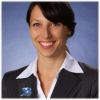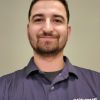ASNT 2021: The Annual Conference
We’re excited to be back in person!
Visit us at booth #503
Register to attend live presentations about how WeldSight software can be used to improve weld and corrosion inspection at booth #503
Tuesday, 11/16
10 a.m.
Improving Your Corrosion Inspections using WeldSight Software
Curtis Dickinson
2 p.m.
Improving Your Weld Inspections using WeldSight
Brandon Reitz
Wednesday, 11/17
10 a.m.
Improving Your Corrosion Inspections using WeldSight Software
Curtis Dickinson
2 p.m.
Improving Your Weld Inspections using WeldSight
Brandon Reitz
Olympus ASNT Presentations
Learn about key NDT topics and challenges from our experts.
Speaker(s)
Presentation Time
Location
Topic
Abstract
Nov 16th 11:05–11:25 a.m.
Innovation Forum Show Floor
Applications for Self-Tandem TFM Modes
In this presentation, Curtis will provide a brief review of TFM imaging modes, discussing the key differences between...pulse-echo and self-tandem modes, and present various industry inspections that benefit from the use of self-tandem TFM. The presentation will include a live demonstration of these inspections utilizing the latest OmniScan X3 software.
Nov 16th 1:30–2:30 p.m.
Room 132, Technical Spotlight
NDT Solutions for a Refinery's Common Damage Mechanisms
We'll discuss a detailed NDT solutions checklist for common refinery assets such as pipelines, tanks, heat exchangers, and storage spheres.We will also talk about common damage mechanisms, including corrosion, high-temperature hydrogen attack (HTHA), wet hydrogen sulfide, and more. Lastly, we'll discuss specific applications and solutions applicable in a refinery before concluding by addressing current state-of-the-industry issues such as the management of new projects and big data.
Nov 16th 2:30–3 p.m.
Room 132, Technical Spotlight
Automation in NDT
There is a demand to increase the speed, accuracy, probability of detection, and traceability of results of NDT inspections. We will investigate the capabilities of current automated inspection systems and how they are used to make our jobs as NDT professionals easier and safer.
Nov 16th 4:30–5 p.m.
Room 127
Total Focusing Method with Phase-Only Ultrasound Signal for Small Flaw Detection
Although TFM enables easier image interpretation than the conventional phased array inspection technique, the use of a single element in transmission during acquisition can result in images with a low signal-to-noise ratio (SNR). This low SNR is due to poor acoustic penetration, typically in thick parts or in highly attenuative material. An imaging method using a TFM algorithm with only the phase-related information of the acquired signals is proposed. Removing the amplitude information from the acquired signals enables the generation of images solely based on signal coherence. This enables the detection of flaws with signal amplitudes similar to the incoherent noise in amplitude-based TFM images. Since material attenuation does not affect the phase of the signal, phase TFM could be helpful for thick or highly attenuative material inspection applications. Another potential benefit is that the coherence level of the noise can be statistically defined, enabling easier dissociation of meaningful indications from noise. The defined noise coherence threshold acts as a logical filter in generated images, separating the noise regions from the meaningful indication regions. The phase TFM algorithm is described here and experimental results on applicative cases are presented.
Nov 17th 1:30–2 p.m.
Room 126
Improving Exotic Material Verification Using XRF
While common alloys, such as steels, titaniums, and aluminums, have been tested and inspected using XRF for decades, uncommon alloys can produce unusual results. The ability to identify the base metal, major alloying elements, and trace materials in these alloys is critical. Modern XRF instruments and software can quickly and easily characterize standard and common alloys, such as low carbon steel, grade 5 titanium, and 6000 series aluminum; detected signals from the metals are generally discrete and strongly pronounced. Less common alloys, such as nickel superalloys and uraniums, present a greater analytical hurdle for rapid, on-site testing, grading, and inspection. These exotic materials contain either weaker signals from the alloying elements or non-unique signatures, preventing accurate quantification. Calibration adjustments through software improvements increases the testing accuracy for these uncommon alloys, bringing their results in line with traditional alloys. By modulating the detection energies of interest, the calculation can surpass standard, out-of-the-box performance without the need for any inspector input. These improvements can provide greater inspection accuracy on a wider variety of rare and valuable alloys.
Nov 17th 2–2:30 p.m.
Room 127
Weld Penetration Monitoring: TFM or PAUT?
In the steel structure industry, modern constructions imply modular and prefabricated design solutions that offer efficient and cost-effective structures with extended service life but generate more challenges for welding and inspection operations.
Similar challenges could be encountered in orthotropic steel bridge deck and mining storage tank fabrication where partial penetration (PP) welding of T and Y joints could be requested.
To help ensure that the penetration target is met, advanced UT techniques have replaced other conventional, less accurate methods (e.g., a fused weld’s color intensity and conventional UT).
This presentation describes and compares phased array ultrasonic testing (PAUT) and total focusing method (TFM) techniques for PP monitoring based on two case studies.
Nov 18th 9-9:30 a.m.
Room 126
The Benefit of Single-Tip Long Pipe Visual Inspection
One of the largest and most obvious complications with long pipe inspection is the length required. This presents many challenges, especially when removing the insertion tube for a different tip adaptor. The lensing on the end of a videoscope affects the direction of view, field of view, depth of field, and inherent brightness. Different applications and types of pipe inspection will require different lenses. This is why choosing the best lens is problematic with a long length pipe inspection. Recent advances enable the user to digitally switch between tips. The user can utilize one tip adaptor but make it behave as if it were several different lenses. Changing the field of view of an image seems obvious but focal ranges and image distortion are factors that make this difficult. These advancements mean the inspector can make quicker assessments with the same efficacy and reliability.








